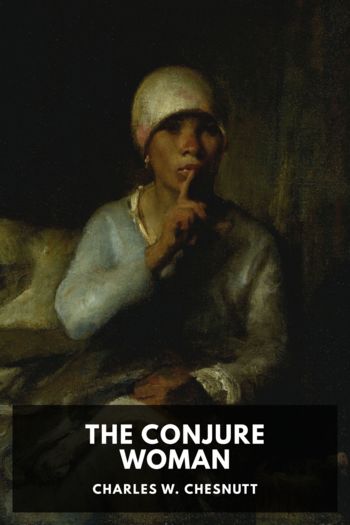The Lives of the Caesars, Suetonius [best book club books for discussion .TXT] 📗

- Author: Suetonius
Book online «The Lives of the Caesars, Suetonius [best book club books for discussion .TXT] 📗». Author Suetonius
See Augustus, 31.4. ↩
Built by Gaius; see note on Claudius, 20.3. ↩
The carceres were compartments closed by barriers, one for each chariot. They were probably twelve in number and were so arranged as to be at an equal distance from the starting point of the race. When the race began, the barriers were removed. The metae, or “goals,” were three conical pillars at each end of the spina, or low wall which ran down the middle of the arena, about which the chariots had to run a given number of times, usually seven; see Domitian, 4.3. ↩
See note on Augustus, 74. ↩
Instead of keeping it covered with his toga, an undignified performance for an emperor. ↩
“The Dove,” nickname of a gladiator. ↩
The symbol of discharge; cf. Horace Epistles 1.1.2. ↩
See note on Caligula, 35.3. ↩
About to die; one of Claudius’s feeble jokes, which the combatants pretended to understand as meaning that they need not risk their lives in battle. ↩
See Claudius, 30 below. ↩
That those whom he had selected were worthy of the honour. ↩
See Galba, 14.3, from which it appears that Claudius made the summer and autumn seasons continuous, and did away with the winter term. ↩
The relegatio was a milder form of exile, without loss of citizenship or confiscation of property, but in this case the offenders were not banished, but confined to the city and its immediate vicinity. ↩
The procuratores were the emperor’s agents, who performed various administrative duties throughout the empire. They were members of the equestrian order and were ranked on the basis of their annual stipend as trecenarii, ducenarii, centenarii, and sexagenarii, receiving respectively 300,000, 200,000, 100,000, and 60,000 sesterces. ↩
A common reason for this was the desire to engage in business, which senators were not allowed to do. ↩
The state treasury, located in the temple of Saturn in the Forum; cf. Augustus, 36. ↩
According to Tacitus, Annals 11.20, this was done by the legions in Germany. ↩
That is, if their own freedmen proved ungrateful and they wished to bring suit against them. ↩
In the Tiber at Rome, so-called from its temple of Aesculapius. ↩
That is, the gentile names such as Claudius, Cornelius, etc.; apparently forenames (Gaius, Lucius, and the like) and surnames (Lentulus, Nasica) might be assumed, although a foreigner often retained his native name as a surname. ↩
The part of the Esquiline hill on both sides of the Serbian wall; occupied in part by the Gardens of Maecenas; see Horace Sermones 1.8. The place of execution seems to have been outside of the Porta Esquilina. ↩
Another form of Christus; see Tertullian, Apologeticum 3 (at the end). It is uncertain whether Suetonius is guilty of an error in chronology or is referring to some Jew of that name. The former seems probable because of the absence of quodam. Tacitus Annals 15.44, uses the correct form, Christus, and states that He was executed in the reign of Tiberius. ↩
The gender is not significant; cf. Livy 1.24; Varro De Re Rustica 2.4.9. ↩
See Livy 1.24. ↩
Of Claudius from Urgulanilla. ↩
Either Suetonius is in error here, or the text is corrupt, since Claudius’ second consulship did not begin until 42, and he began to reign Jan. 25, 41. ↩
A common military prize. ↩
Only two of these are known, both named Drusilla. One was the daughter of Juba II, king of Mauretania, and the other of Herod Agrippa I, of Judaea; the latter was previously married to Azizus, king of Emesa. ↩
Otherwise restricted to knights. ↩
Claudius, 25. ↩
The fulcra were the ends of the couches on which the pillows were placed; see Classical Review 3, pp. 322 ff. ↩
Cf. Augustus, 64.3. ↩
Their feasts were proverbial for luxury; see Horace Odes, I.37.2. ↩
See Augustus, 33.1. ↩
See Livy, I.26.6; Nero, 49.2; Domitian, 11.2–3. ↩
Their faces were not covered by helmets; retiarii: net-fighters who were lightly armed and fought with uncovered heads. They carried a net, in which they tried to entangle their opponents, and a trident and dagger, with which they slew them, if successful. ↩
According to Pliny, Natural History 28.34, game killed with a knife with which a man had been slain was a specific for epilepsy. ↩
Those who fought during the midday interval, perhaps the paegniarii; See Caligula, 26.5, with the reference to Friedländer there given. ↩
A structure with several movable stories, for show pieces and other stage effects; see Juvenal 4.122, and Mayor’s note. ↩
See note on Augustus, 19.1. ↩
Claudius, 12. ↩
Claudius, 13. ↩





Comments (0)